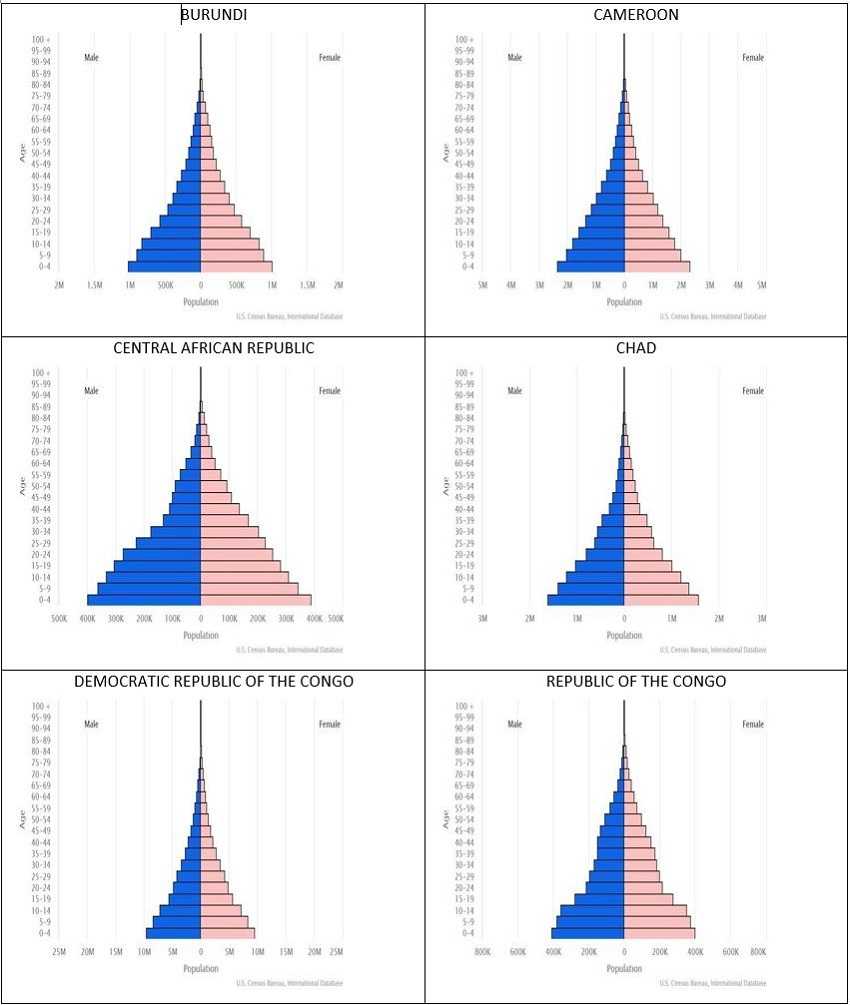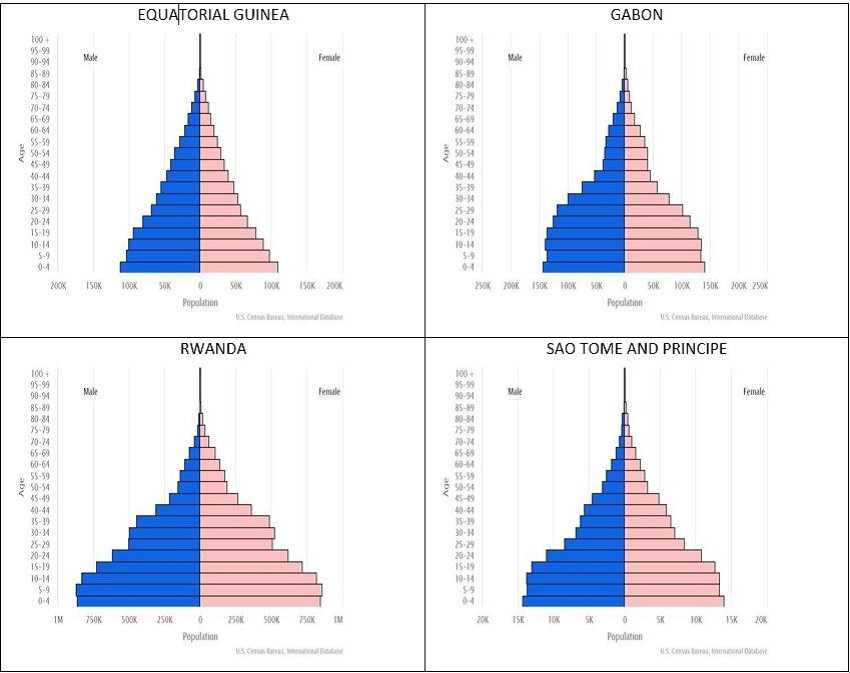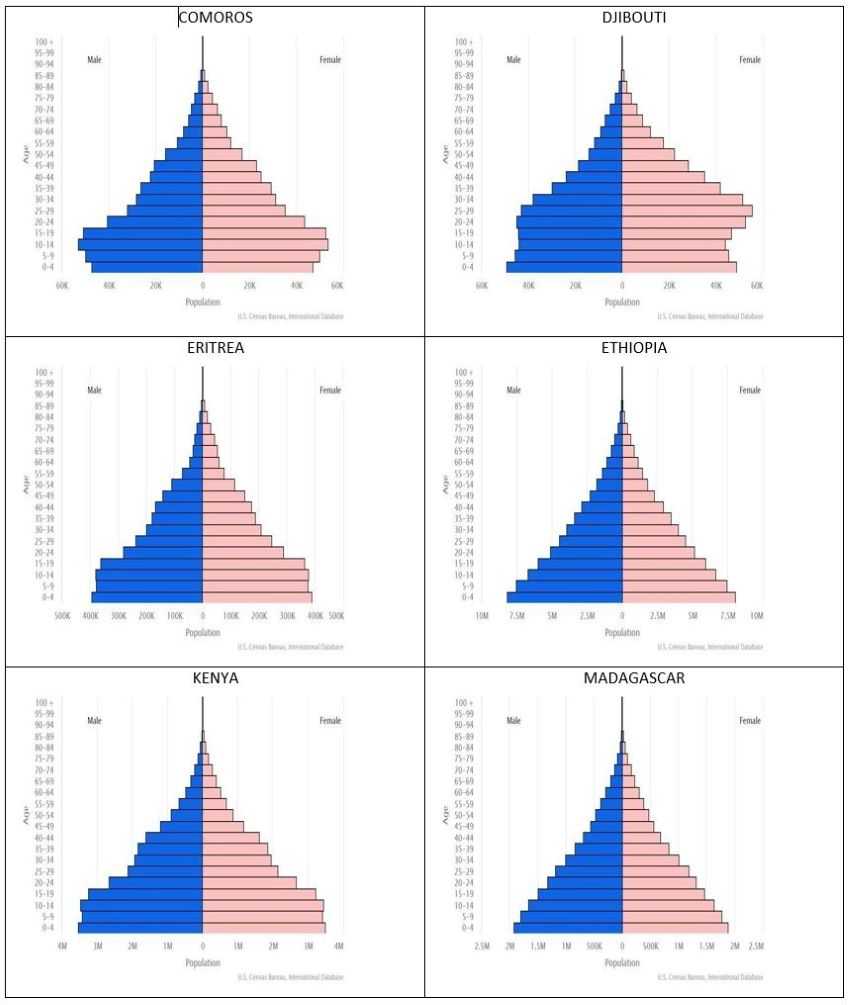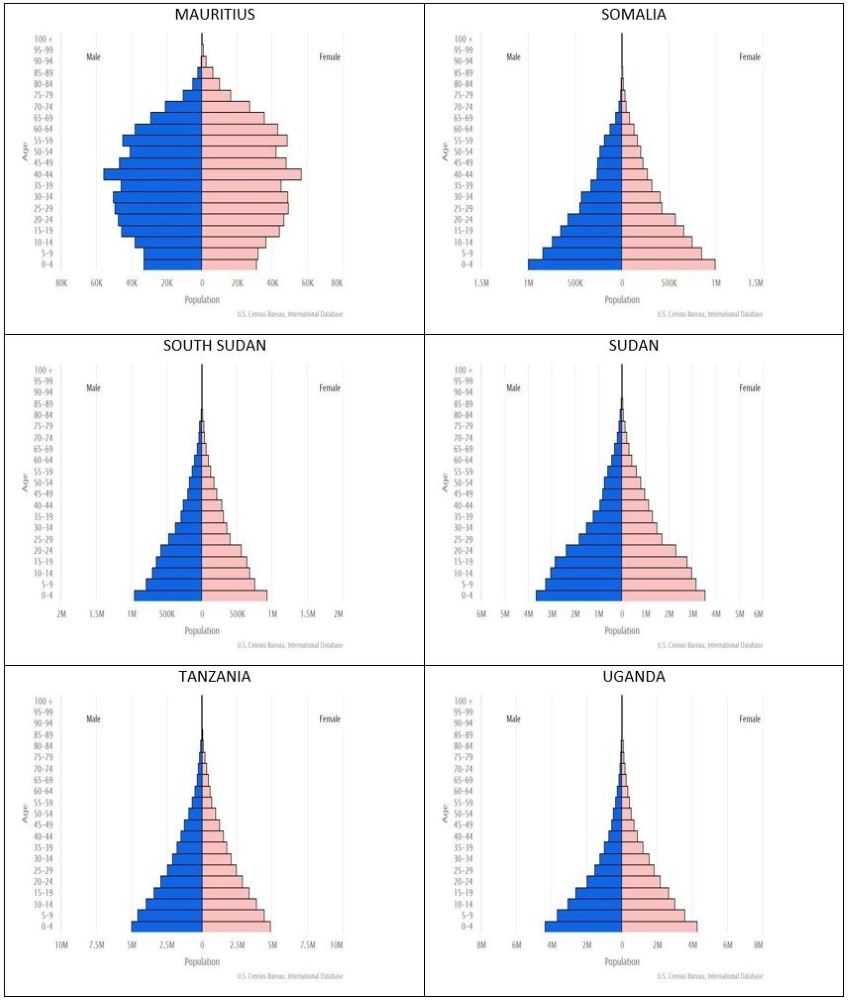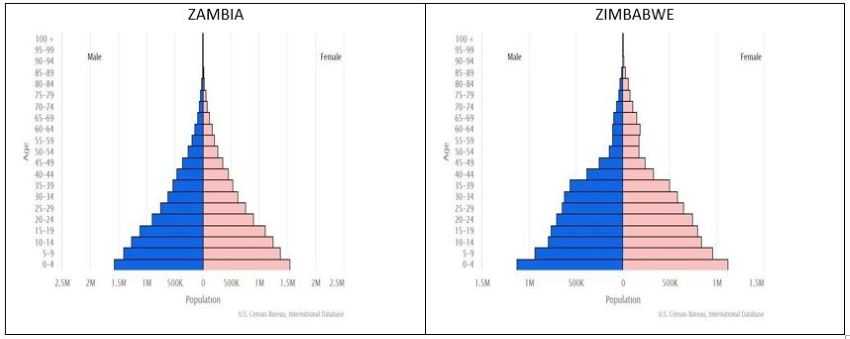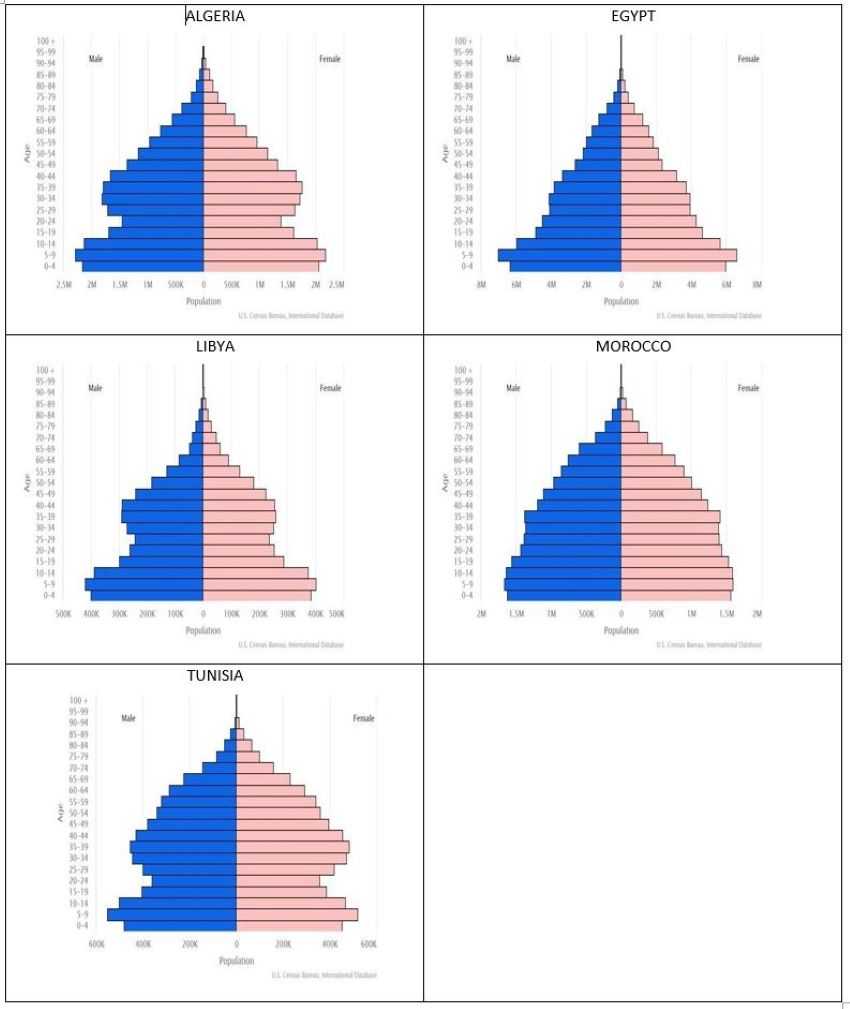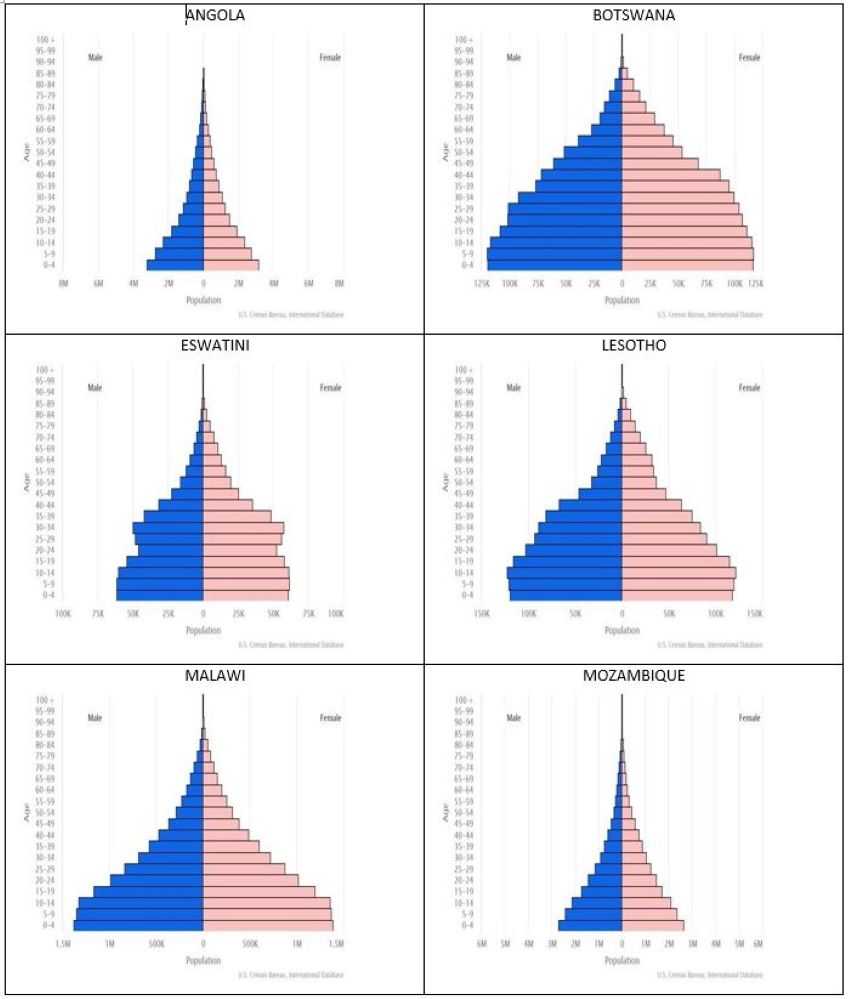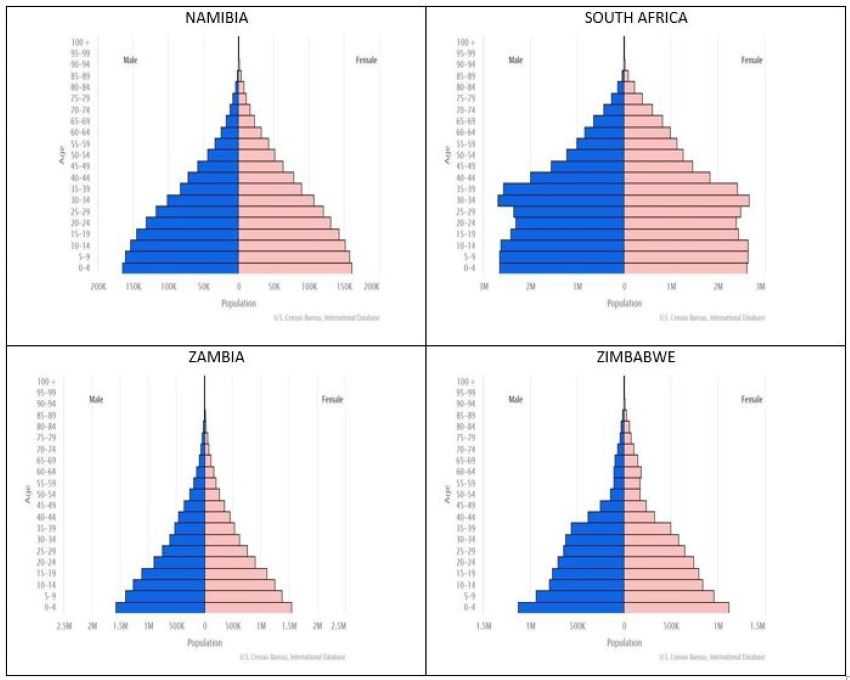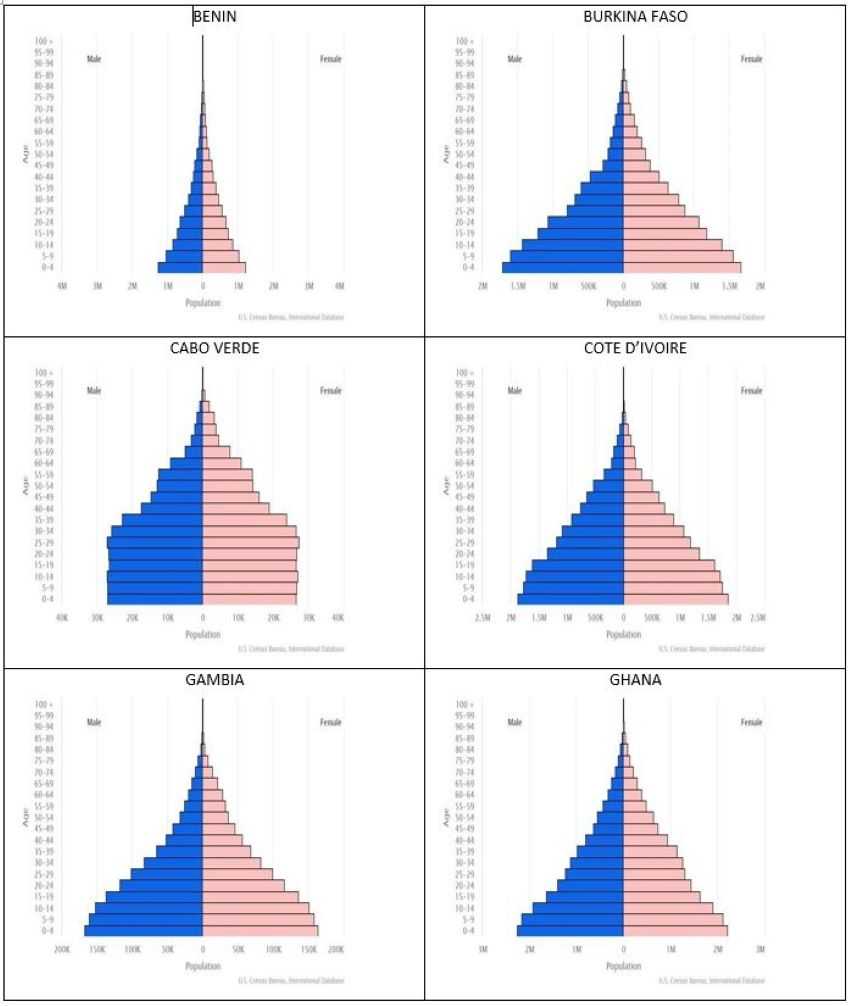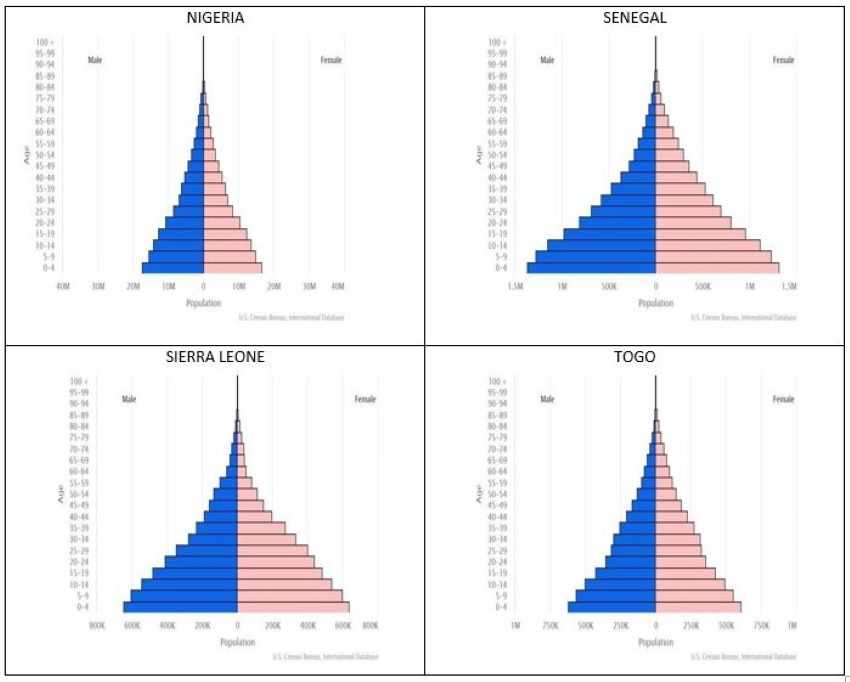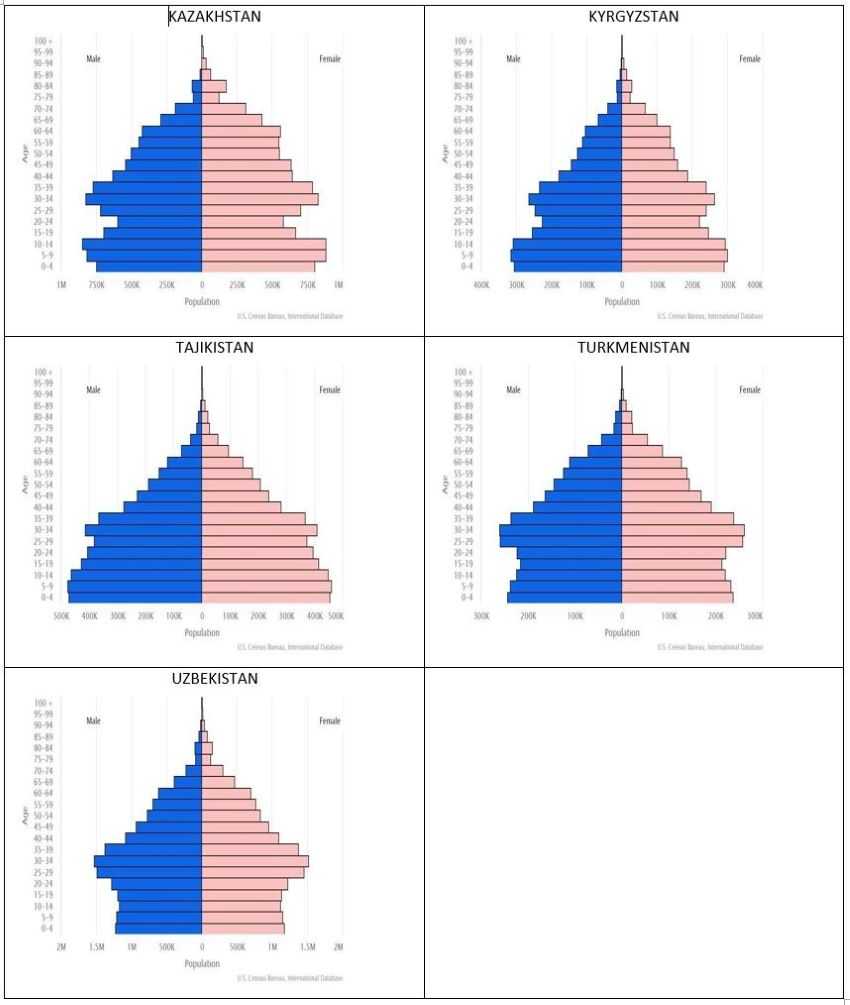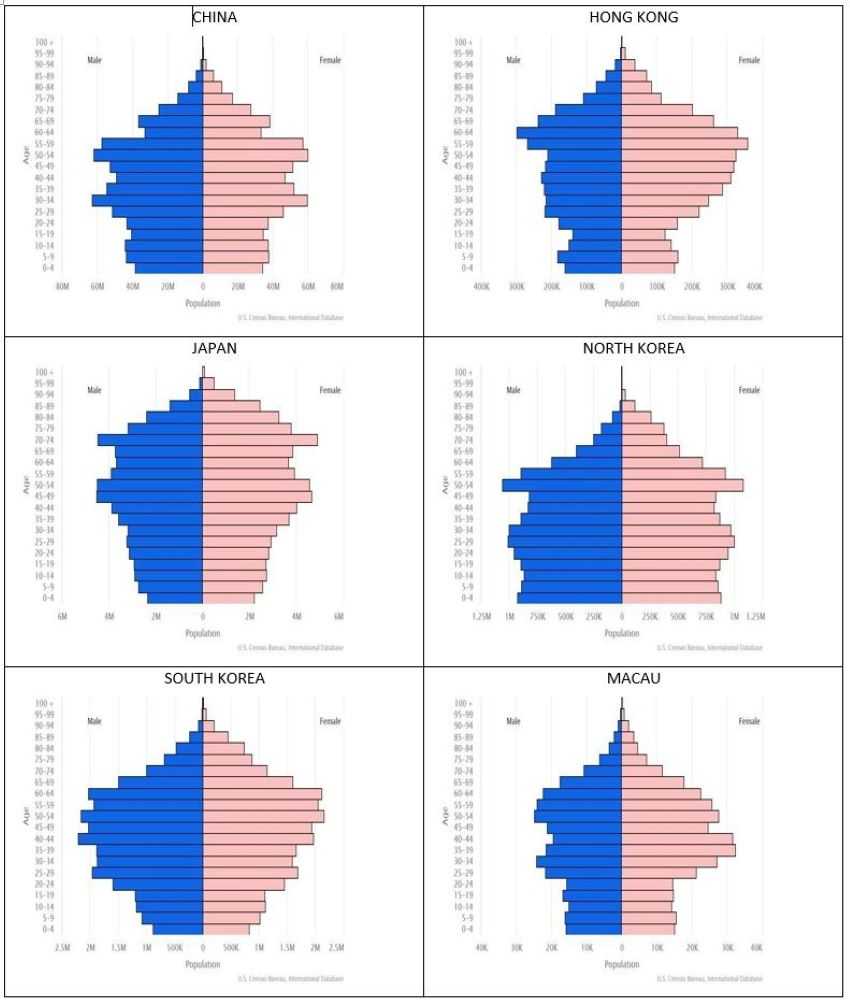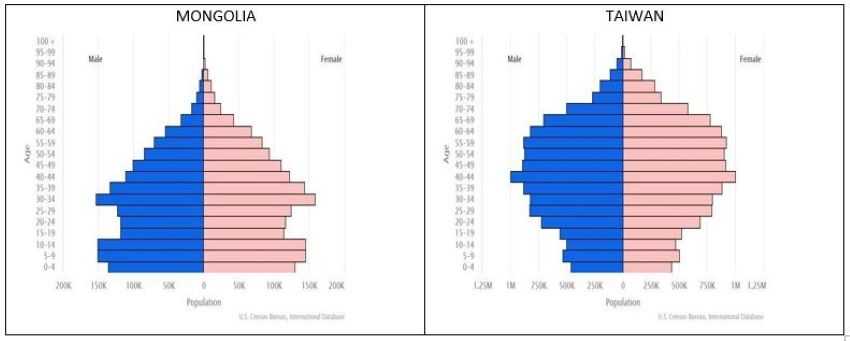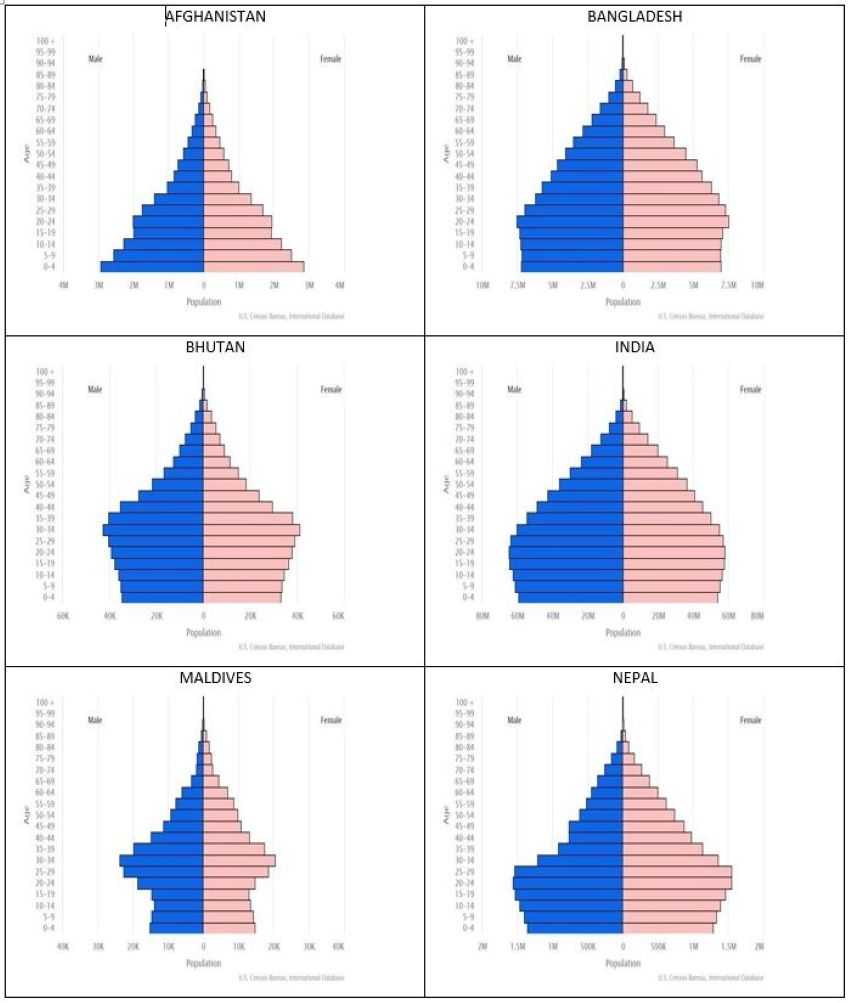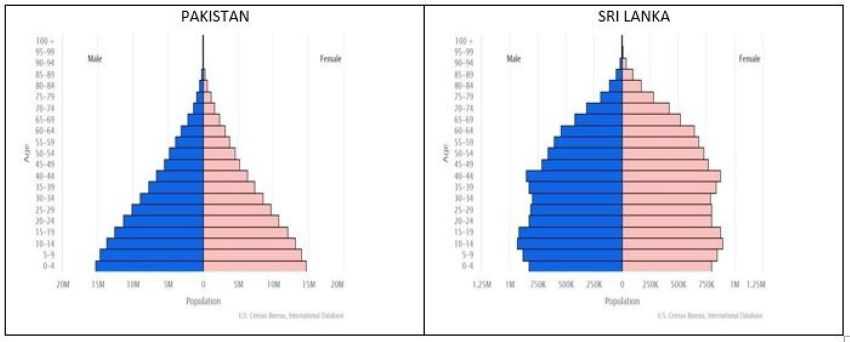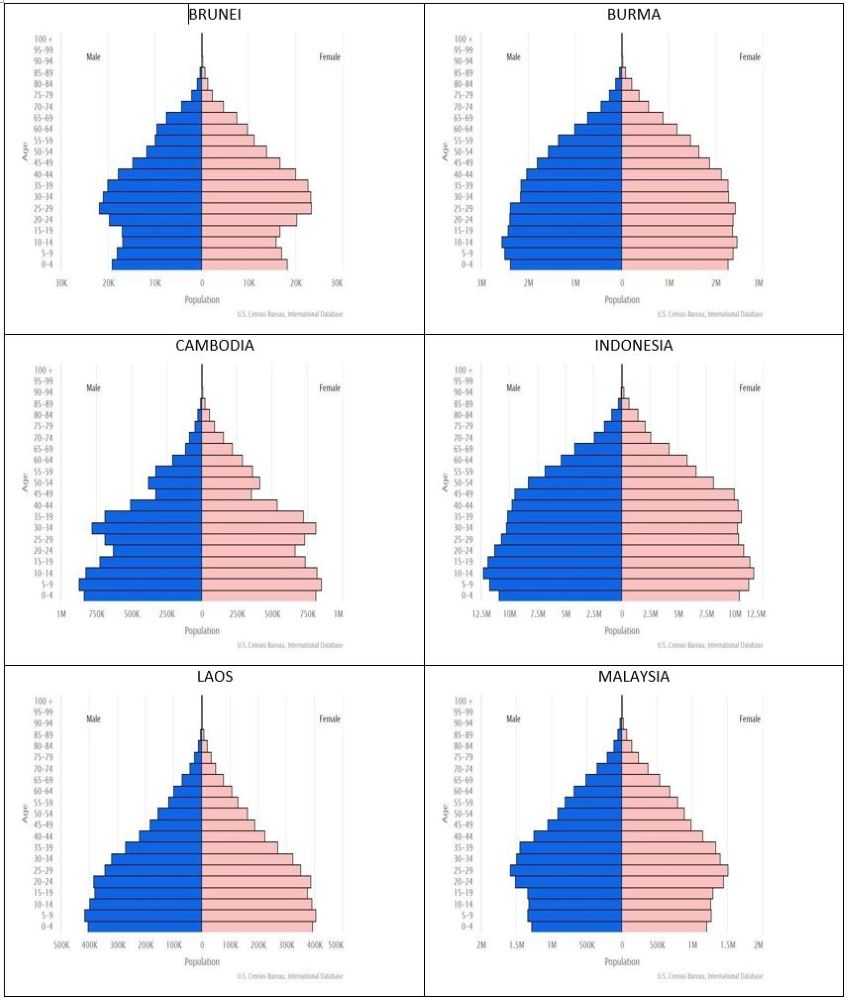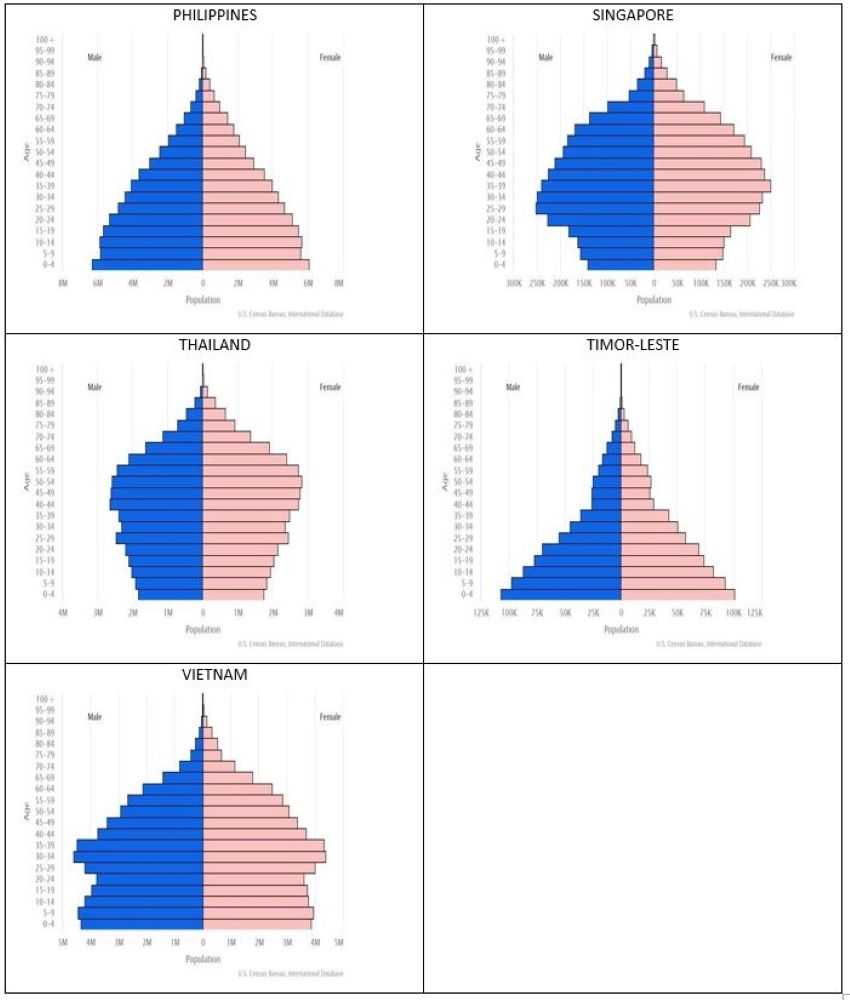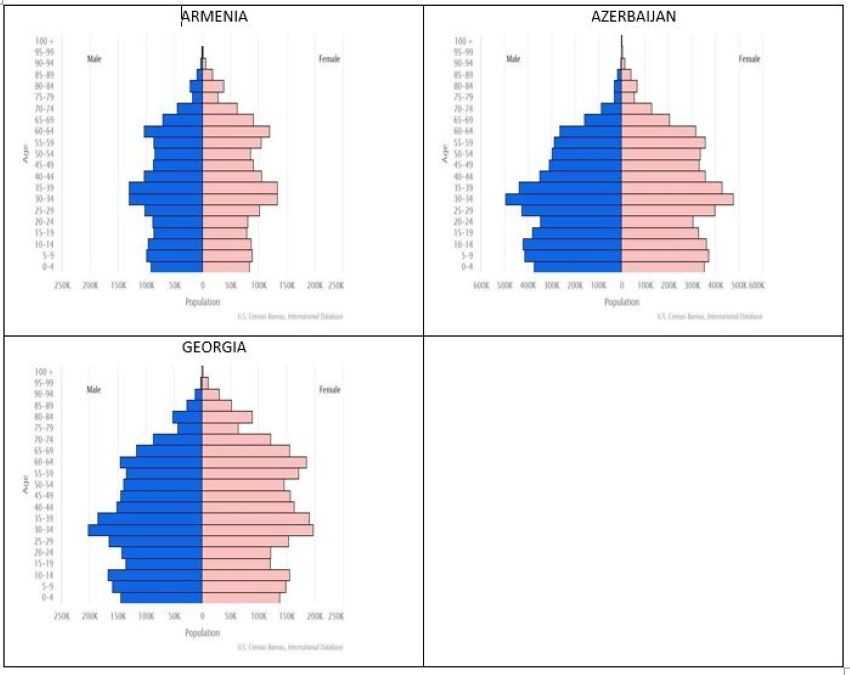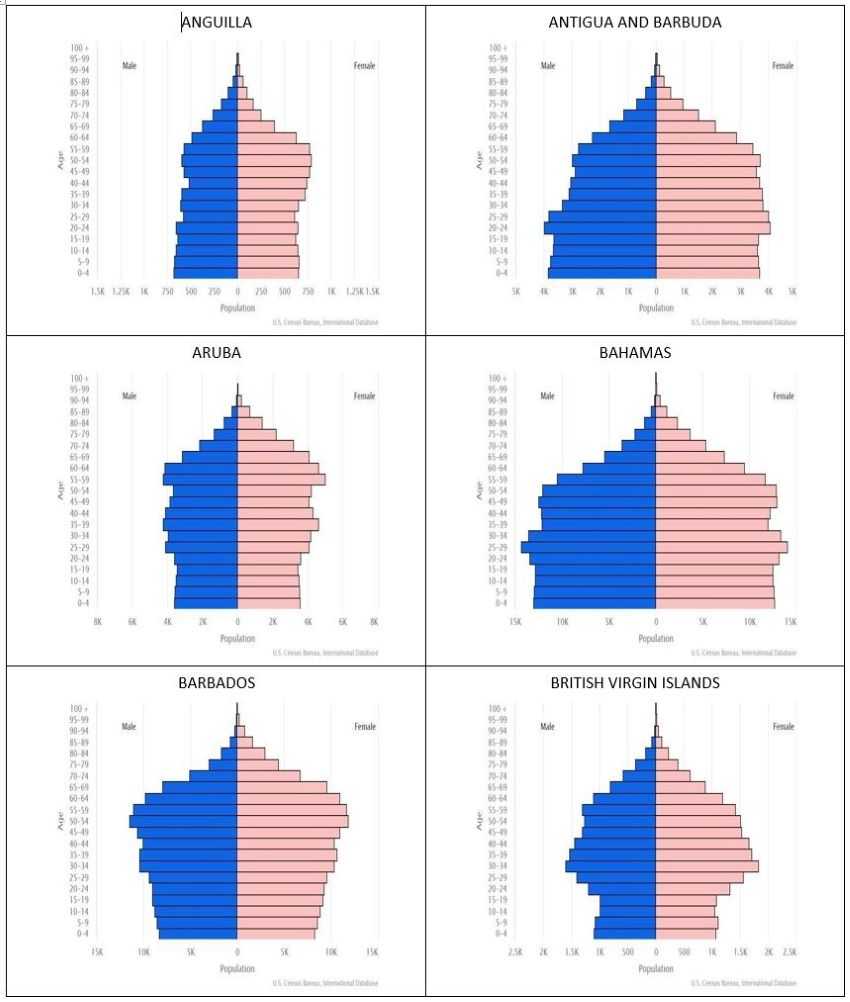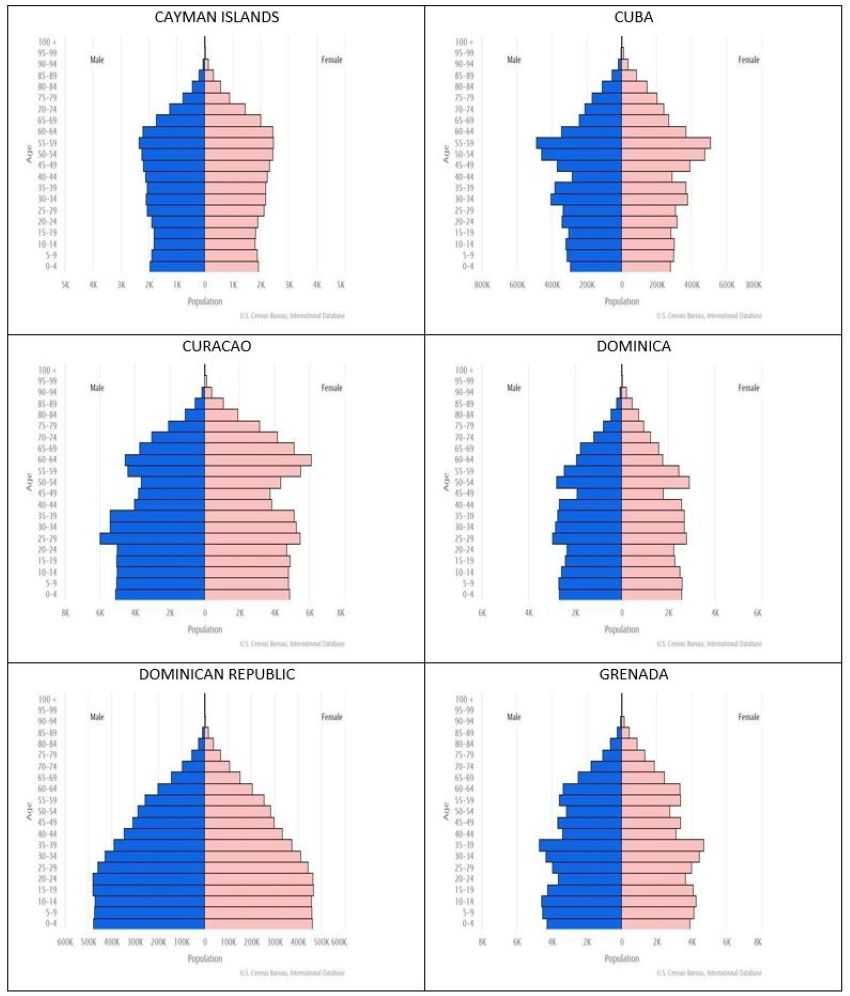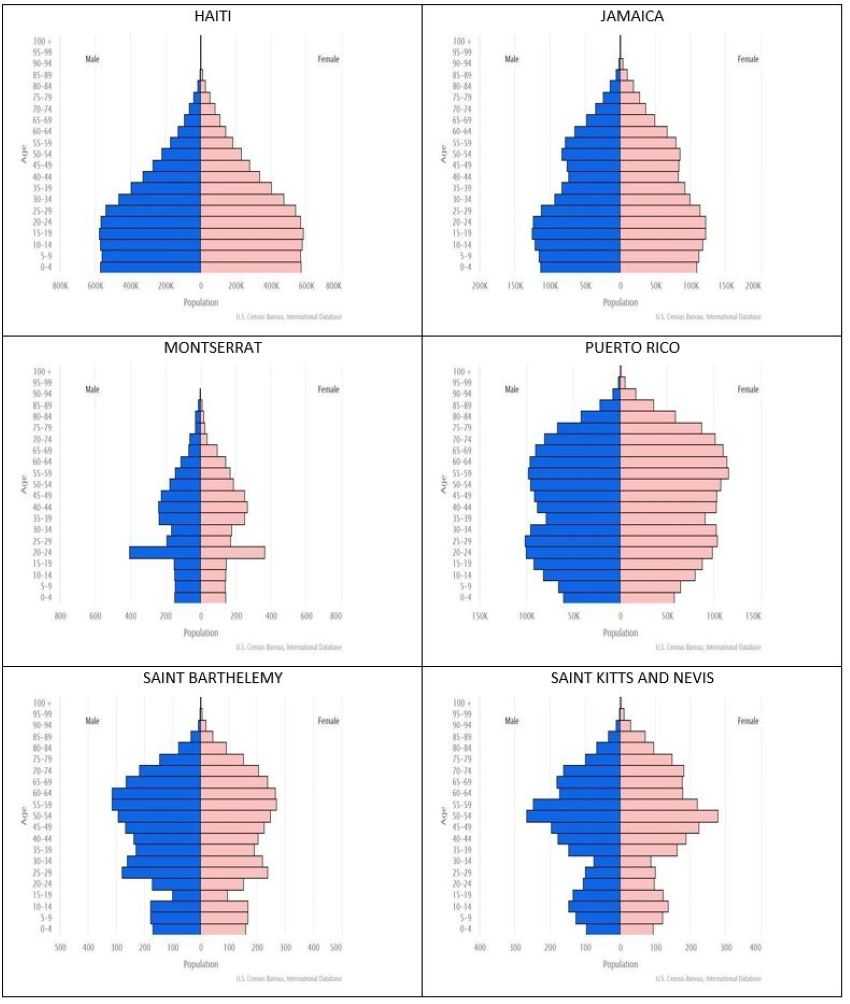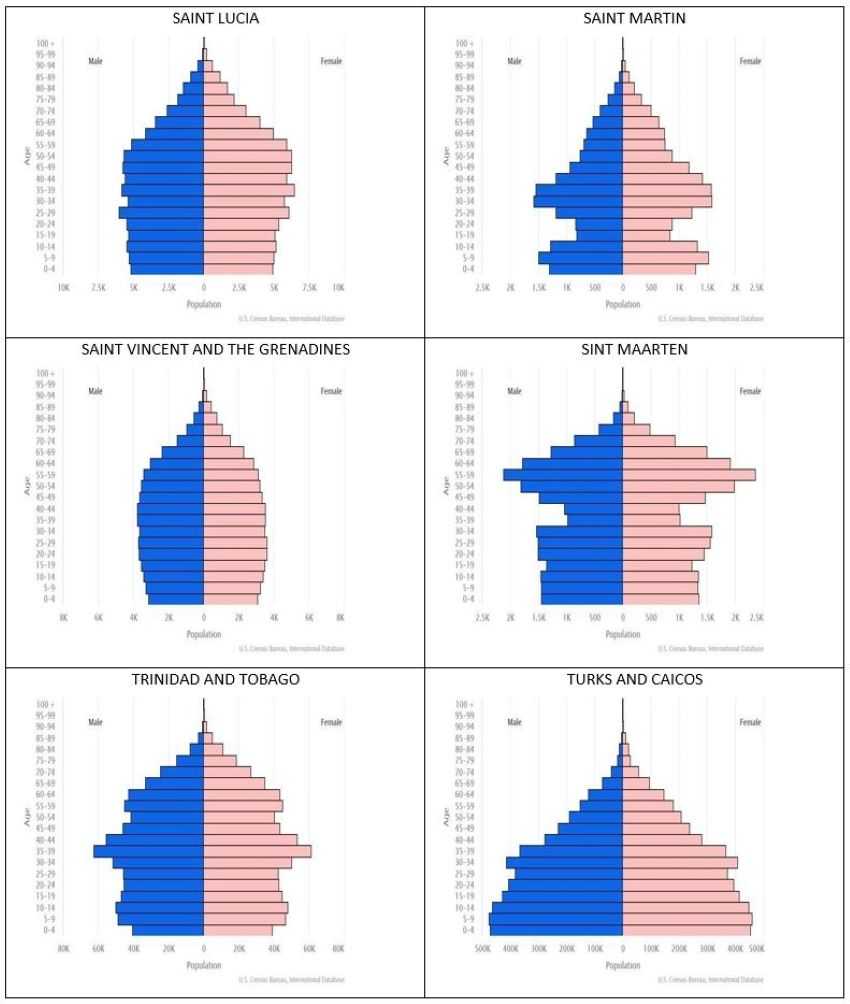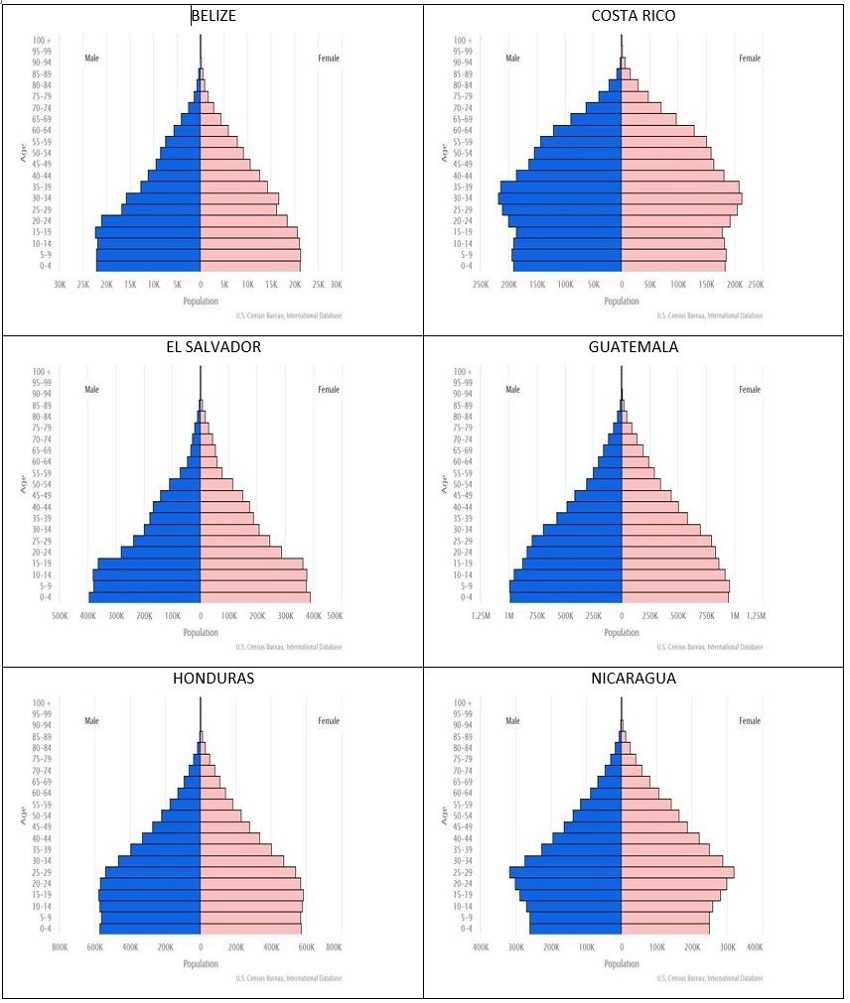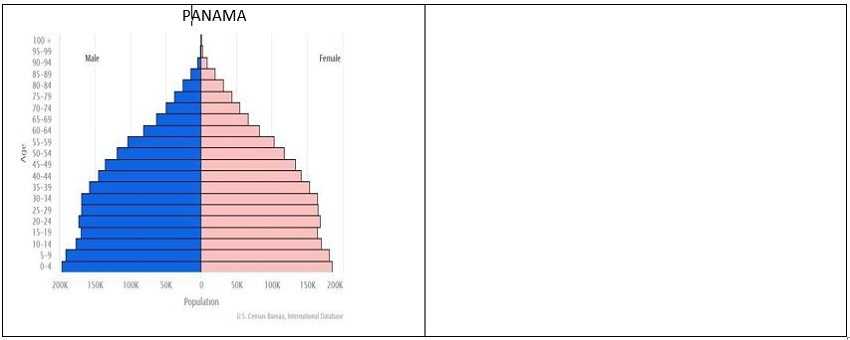Population Pyramids by Region
Africa: Central
Below are the population pyramids for the Central African nations. Population pyramids illustrate the age and sex structure of a country’s populations. The horizontal axis displays population, with males shown on the left and females on the right, and both segments broken down into 5-year age groups along the vertical axis. Age groups progress from the youngest at the bottom to the oldest at the top. The shape of population pyramids evolves over time based on fertility, mortality, and international migration trends.
Africa: East
Below are the population pyramids for East African nations. Population pyramids illustrate the age and sex structure of a country’s populations. The horizontal axis displays population, with males shown on the left and females on the right, and both segments broken down into 5-year age groups along the vertical axis. Age groups progress from the youngest at the bottom to the oldest at the top. The shape of population pyramids evolves over time based on fertility, mortality, and international migration trends.
Africa: North
Below are the population pyramids for North African nations. Population pyramids illustrate the age and sex structure of a country’s populations. The horizontal axis displays population, with males shown on the left and females on the right, and both segments broken down into 5-year age groups along the vertical axis. Age groups progress from the youngest at the bottom to the oldest at the top. The shape of population pyramids evolves over time based on fertility, mortality, and international migration trends.
Africa: South
Below are the population pyramids for South African nations. Population pyramids illustrate the age and sex structure of a country’s populations. The horizontal axis displays population, with males shown on the left and females on the right, and both segments broken down into 5-year age groups along the vertical axis. Age groups progress from the youngest at the bottom to the oldest at the top. The shape of population pyramids evolves over time based on fertility, mortality, and international migration trends.
Africa: West
Below are the population pyramids for West African nations. Population pyramids illustrate the age and sex structure of a country’s populations. The horizontal axis displays population, with males shown on the left and females on the right, and both segments broken down into 5-year age groups along the vertical axis. Age groups progress from the youngest at the bottom to the oldest at the top. The shape of population pyramids evolves over time based on fertility, mortality, and international migration trends.
Asia: Central
Below are the population pyramids for Central Asian nations. Population pyramids illustrate the age and sex structure of a country’s populations. The horizontal axis displays population, with males shown on the left and females on the right, and both segments broken down into 5-year age groups along the vertical axis. Age groups progress from the youngest at the bottom to the oldest at the top. The shape of population pyramids evolves over time based on fertility, mortality, and international migration trends.
Asia: East
Below are the population pyramids for East Asian nations. Population pyramids illustrate the age and sex structure of a country’s populations. The horizontal axis displays population, with males shown on the left and females on the right, and both segments broken down into 5-year age groups along the vertical axis. Age groups progress from the youngest at the bottom to the oldest at the top. The shape of population pyramids evolves over time based on fertility, mortality, and international migration trends.
Asia: South
Below are the population pyramids for South Asian nations. Population pyramids illustrate the age and sex structure of a country’s populations. The horizontal axis displays population, with males shown on the left and females on the right, and both segments broken down into 5-year age groups along the vertical axis. Age groups progress from the youngest at the bottom to the oldest at the top. The shape of population pyramids evolves over time based on fertility, mortality, and international migration trends.
Asia: Southeast
Below are the population pyramids for Southeast Asian nations. Population pyramids illustrate the age and sex structure of a country’s populations. The horizontal axis displays population, with males shown on the left and females on the right, and both segments broken down into 5-year age groups along the vertical axis. Age groups progress from the youngest at the bottom to the oldest at the top. The shape of population pyramids evolves over time based on fertility, mortality, and international migration trends.
Asia: West
Below are the population pyramids for West Asian nations. Population pyramids illustrate the age and sex structure of a country’s populations. The horizontal axis displays population, with males shown on the left and females on the right, and both segments broken down into 5-year age groups along the vertical axis. Age groups progress from the youngest at the bottom to the oldest at the top. The shape of population pyramids evolves over time based on fertility, mortality, and international migration trends.
Caribbean
Below are the population pyramids for Caribbean island nations. Population pyramids illustrate the age and sex structure of a country’s populations. The horizontal axis displays population, with males shown on the left and females on the right, and both segments broken down into 5-year age groups along the vertical axis. Age groups progress from the youngest at the bottom to the oldest at the top. The shape of population pyramids evolves over time based on fertility, mortality, and international migration trends.
Central America
Below are the population pyramids for Central American nations. Population pyramids illustrate the age and sex structure of a country’s populations. The horizontal axis displays population, with males shown on the left and females on the right, and both segments broken down into 5-year age groups along the vertical axis. Age groups progress from the youngest at the bottom to the oldest at the top. The shape of population pyramids evolves over time based on fertility, mortality, and international migration trends.
